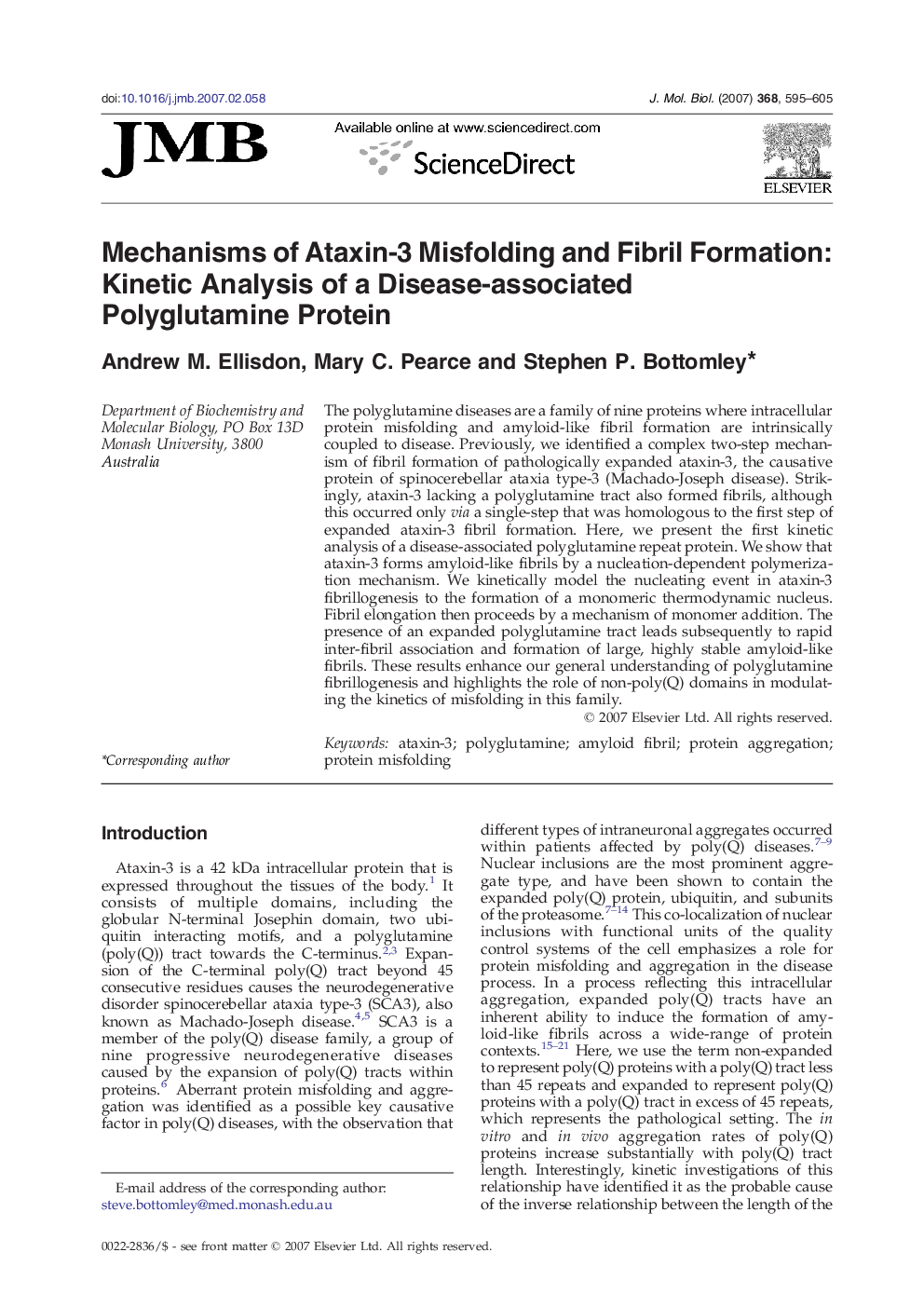| Article ID | Journal | Published Year | Pages | File Type |
|---|---|---|---|---|
| 2188686 | Journal of Molecular Biology | 2007 | 11 Pages |
The polyglutamine diseases are a family of nine proteins where intracellular protein misfolding and amyloid-like fibril formation are intrinsically coupled to disease. Previously, we identified a complex two-step mechanism of fibril formation of pathologically expanded ataxin-3, the causative protein of spinocerebellar ataxia type-3 (Machado-Joseph disease). Strikingly, ataxin-3 lacking a polyglutamine tract also formed fibrils, although this occurred only via a single-step that was homologous to the first step of expanded ataxin-3 fibril formation. Here, we present the first kinetic analysis of a disease-associated polyglutamine repeat protein. We show that ataxin-3 forms amyloid-like fibrils by a nucleation-dependent polymerization mechanism. We kinetically model the nucleating event in ataxin-3 fibrillogenesis to the formation of a monomeric thermodynamic nucleus. Fibril elongation then proceeds by a mechanism of monomer addition. The presence of an expanded polyglutamine tract leads subsequently to rapid inter-fibril association and formation of large, highly stable amyloid-like fibrils. These results enhance our general understanding of polyglutamine fibrillogenesis and highlights the role of non-poly(Q) domains in modulating the kinetics of misfolding in this family.
